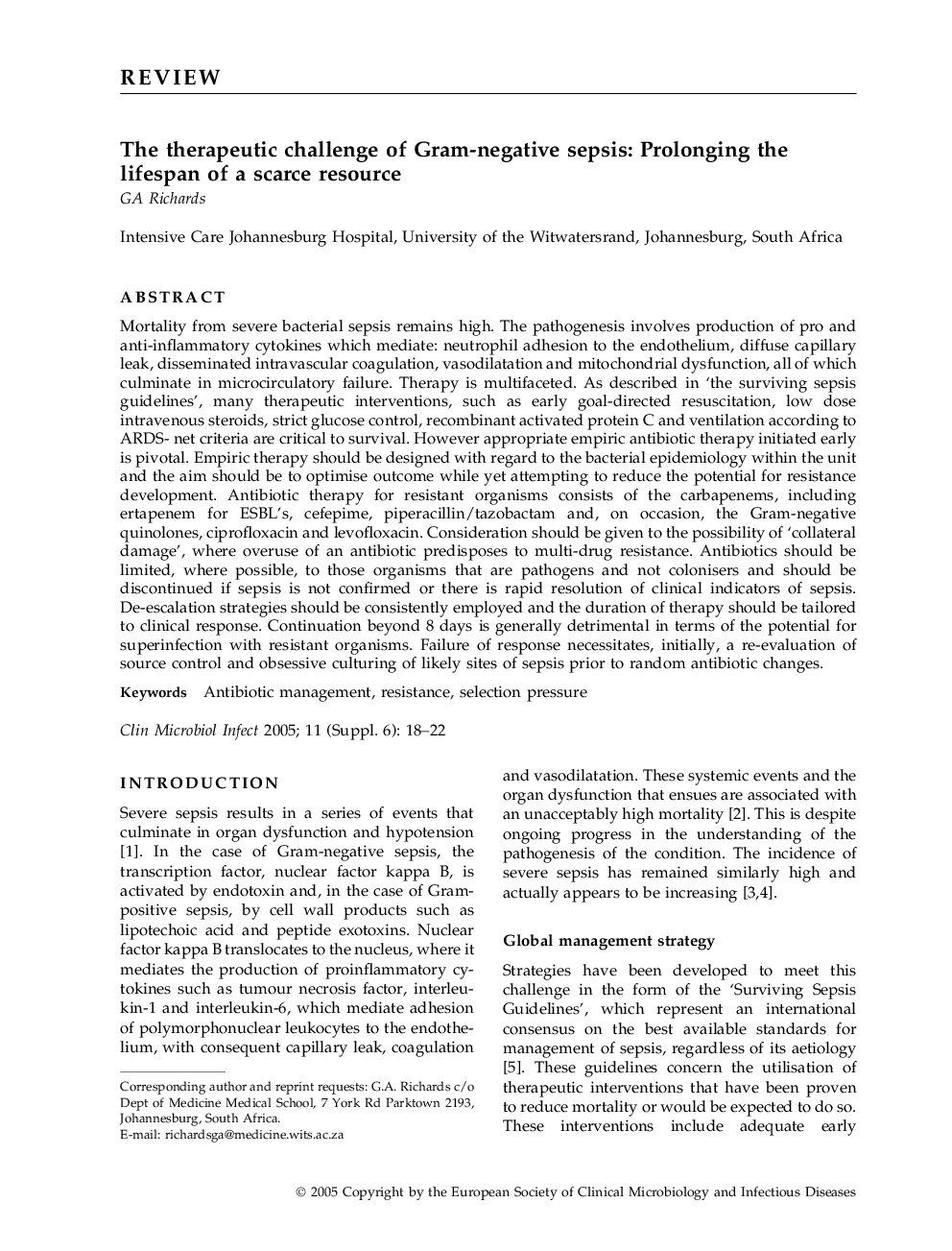| کد مقاله | کد نشریه | سال انتشار | مقاله انگلیسی | نسخه تمام متن |
|---|---|---|---|---|
| 9275486 | 1222308 | 2005 | 5 صفحه PDF | دانلود رایگان |
عنوان انگلیسی مقاله ISI
The therapeutic challenge of Gram-negative sepsis: Prolonging the lifespan of a scarce resource
دانلود مقاله + سفارش ترجمه
دانلود مقاله ISI انگلیسی
رایگان برای ایرانیان
کلمات کلیدی
موضوعات مرتبط
علوم زیستی و بیوفناوری
ایمنی شناسی و میکروب شناسی
میکروب شناسی
پیش نمایش صفحه اول مقاله

چکیده انگلیسی
Mortality from severe bacterial sepsis remains high. The pathogenesis involves production of pro and anti-inflammatory cytokines which mediate: neutrophil adhesion to the endothelium, diffuse capillary leak, disseminated intravascular coagulation, vasodilatation and mitochondrial dysfunction, all of which culminate in microcirculatory failure. Therapy is multifaceted. As described in 'the surviving sepsis guidelines', many therapeutic interventions, such as early goal-directed resuscitation, low dose intravenous steroids, strict glucose control, recombinant activated protein C and ventilation according to ARDS- net criteria are critical to survival. However appropriate empiric antibiotic therapy initiated early is pivotal. Empiric therapy should be designed with regard to the bacterial epidemiology within the unit and the aim should be to optimise outcome while yet attempting to reduce the potential for resistance development. Antibiotic therapy for resistant organisms consists of the carbapenems, including ertapenem for ESBL's, cefepime, piperacillin/tazobactam and, on occasion, the Gram-negative quinolones, ciprofloxacin and levofloxacin. Consideration should be given to the possibility of 'collateral damage', where overuse of an antibiotic predisposes to multi-drug resistance. Antibiotics should be limited, where possible, to those organisms that are pathogens and not colonisers and should be discontinued if sepsis is not confirmed or there is rapid resolution of clinical indicators of sepsis. De-escalation strategies should be consistently employed and the duration of therapy should be tailored to clinical response. Continuation beyond 8 days is generally detrimental in terms of the potential for superinfection with resistant organisms. Failure of response necessitates, initially, a re-evaluation of source control and obsessive culturing of likely sites of sepsis prior to random antibiotic changes.
ناشر
Database: Elsevier - ScienceDirect (ساینس دایرکت)
Journal: Clinical Microbiology and Infection - Volume 11, Supplement 6, 2005, Pages 18-22
Journal: Clinical Microbiology and Infection - Volume 11, Supplement 6, 2005, Pages 18-22
نویسندگان
G.A. Richards,